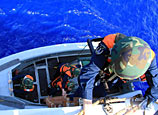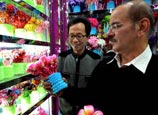
Carving a slice of the pie
Globally, the industry is booming. With an estimated 6 million people traveling to seek medical treatment each year, the medical tourism sector was estimated at $100 billion in 2012, and is growing at a rate of 20 to 30 percent annually. Thailand, Singapore and India are leading the medical tourism market worldwide.
Some hospitals in China have been treating overseas patients who found their way on their own. A travel company in Hangzhou has also launched a medical tour package that helps overseas tourists get dental work or TCM treatment but so far it has received no clients.
However, medical tourism involves more than this. It signifies offering tourists a complete set of services, from overseas patient inquiries, doctor consultations, trip planning, treatment and recuperation. Liu notes that it will take more than efforts from individual institutions to build up this industry.
Some concerted efforts have been made with Shanghai making a push for international recognition in the field after the Shanghai Expo in 2010.
In June 2010, the Shanghai Medical Tourism Products and Promotion Platform was established with the support of local government agencies including health and tourism bureaus. The platform was soon able to bring together over 20 participating hospitals in the metropolis.
Many patients from Argentina have been treated for cancer in Shanghai via the platform, including a cousin of the Argentinean president, according to Yang Jian, founder and CEO of the China Medical Tourism Company, which was registered in California and runs the platform.
The platform handles patient inquiries online, helps contact hospitals which can offer the right treatment and even arranges the entire trip. Target clients are those whose procedures would cost over $6,000 in the US and takes two to four weeks on average, said Yang.
However, dark times were soon to come as there were reports last year that Yang's company was on the verge of bankruptcy. Yang dodged the question, saying it was simply difficult to create a market niche at first but that things are looking up now.
He said they receive about 100 inquiries a month, but a patient may end up contacting the hospital directly and arranging the trip alone. He would provide no specifics as to revenue or about the numbers of patients that had arranged treatment in China through the platform.
Shanghai East Hospital, located in the city's financial center, is one of the initiators of the platform. It treats about 50,000 foreign patients a year, but it's not clear what percentage of these qualify as being here for medical tourism. The platform's websites list a dozen of wide-ranging treatments on offer, from cancer treatment to cosmetic surgery to fertility treatment.
Yang estimates that about 70 percent of overseas patients are looking for cancer immunotherapy in Shanghai. Many are interested in treatments that are restricted or unavailable in their own countries but are practiced or are legally fuzzy in China, such as stem cell therapy and body gamma knife surgeries.
Gamma knife therapy and stem cells are among the featured services on the website. Such procedures are not supposed to be the core product for medical tourists, but still, many foreigners are interested, said Yang.


















 A father posed nude at an art studio, to raise money for his children's medical expenses
A father posed nude at an art studio, to raise money for his children's medical expenses


![]()
